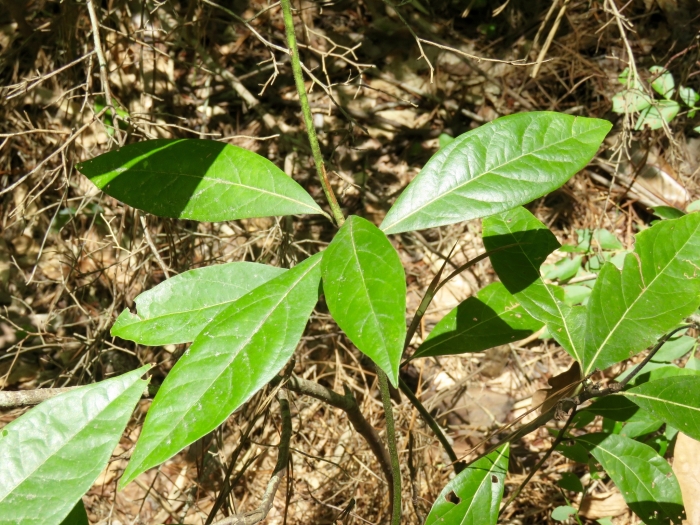Swamp Bay
(Persea palustris)
Swamp Bay (Persea palustris)
/
/

Laura Clark
CC BY 4.0
Image By:
Laura Clark
Recorded By:
Copyright:
CC BY 4.0
Copyright Notice:
Photo by: Laura Clark | License Type: CC BY 4.0 | License URL: http://creativecommons.org/licenses/by/4.0/ | Rights Holder: Laura Clark | Publisher: iNaturalist | Date Created: 2017-06-26T12:54:30-07:00 |















































Estimated Native Range
Summary
Persea palustris, commonly known as Swamp Bay, is an evergreen tree native to wetland areas, including swamp margins, wet woodlands, and along streams in the southeastern United States. Its range extends from Texas eastwards to Florida and north to Delaware, predominantly within the Gulf Coastal Plain and Atlantic Coastal Plain, with some presence in the Piedmont region. It is also found in the Bahamas. Swamp Bay typically reaches a height of 20-25 feet (6-7.6 meters) with a similar spread of 15-25 feet (4.5-7.6 meters). The tree is characterized by its glossy, lanceolate leaves and small, creamy-white flowers that bloom in spring, followed by dark, berry-like fruits that are attractive to wildlife.
Swamp Bay is valued for its evergreen foliage and its adaptability to wet conditions, making it suitable for rain gardens and areas with poor drainage. It is also used for restoration projects in its native habitat. While it prefers full sun, it can tolerate partial shade and requires high amounts of water, typically thriving in soils with slow or wet drainage. Gardeners should note that it may be susceptible to Laurel wilt disease, which is spread by the invasive redbay ambrosia beetle.CC BY-SA 4.0
Swamp Bay is valued for its evergreen foliage and its adaptability to wet conditions, making it suitable for rain gardens and areas with poor drainage. It is also used for restoration projects in its native habitat. While it prefers full sun, it can tolerate partial shade and requires high amounts of water, typically thriving in soils with slow or wet drainage. Gardeners should note that it may be susceptible to Laurel wilt disease, which is spread by the invasive redbay ambrosia beetle.CC BY-SA 4.0
Plant Description
- Plant Type: Tree
- Height: 20-25 feet
- Width: 15-25 feet
- Growth Rate: Moderate
- Flower Color: N/A
- Flowering Season: Spring
- Leaf Retention: Evergreen
Growth Requirements
- Sun: Full Sun, Part Shade
- Water: High
- Drainage: Slow, Wet
Common Uses
Bee Garden, Bird Garden, Butterfly Garden, Low Maintenance, Salt Tolerant
Natural Habitat
Native to wetland areas, including swamp margins, wet woodlands, and along streams in the southeastern United States and the Bahamas
Other Names
Common Names:
Scientific Names: , Persea palustris, Persea pubescens, Persea borbonia var. pubescens, Persea borbonia f. pubescens, Persea caroliniensis var. pubescens, Persea palustris f. laevifolia, Borbonia pubescens, Laurus carolinensis subsp. pubescens, Laurus carolinensis var. pubescens
GBIF Accepted Name: Persea palustris Sarg.